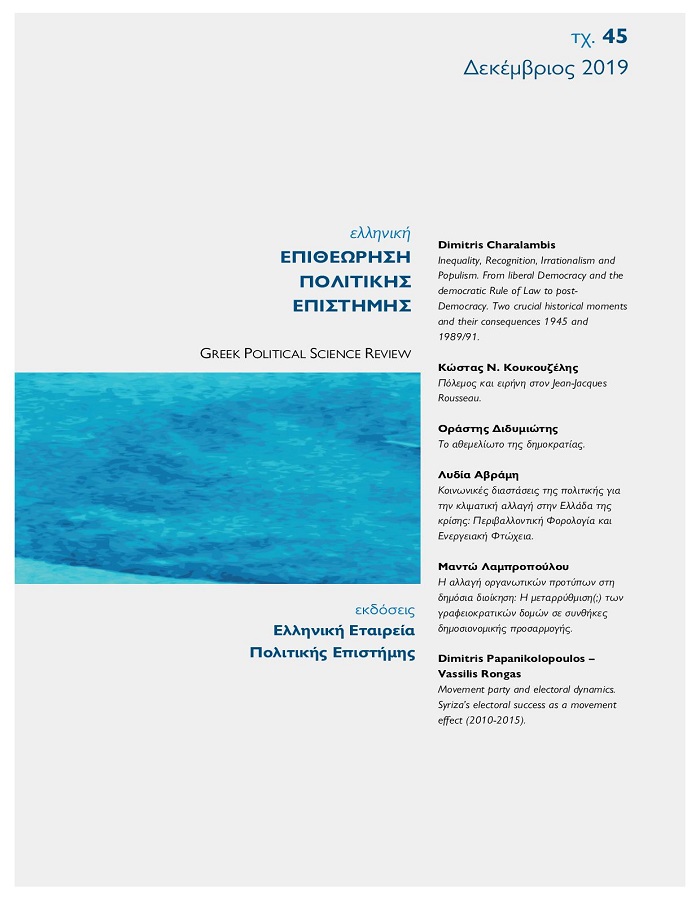Movement, party and electoral dynamics. Syriza’s electoral success as a movement effect (2010-2015)

Abstract
In this article we approach SYRIZA's electoral success between 2012 and 2015 as a movement effect. We focus on SYRIZA's features, strategy and message that have been developed on the grounds of its movement activity, as well as on the external political conditions which SYRIZA seems to take advantage of. We argue that the anti-austerity campaign created the necessary preconditions for the electoral and political rise of SYRIZA, namely the emergence of a new political boundary between pro- and anti-Memorandum forces and a subsequent majoritarian socio-political category that could be transformed into a privileged electoral pool for SYRIZA.
Article Details
- How to Cite
-
Papanikolopoulos, D., & Rongas, V. (2020). Movement, party and electoral dynamics. Syriza’s electoral success as a movement effect (2010-2015). Greek Political Science Review, 45(1), 181–203. https://doi.org/10.12681/hpsa.22316
- Issue
- Vol. 45 (2019)
- Section
- Articles

This work is licensed under a Creative Commons Attribution-NonCommercial-ShareAlike 4.0 International License.
Authors who publish with this journal agree to the following terms:
Authors retain copyright and grant the journal right of first publication with the work simultaneously licensed under a Creative Commons Attribution licence that allows others to share the work with an acknowledgement of the work's authorship and initial publication in this journal.
Authors are able to enter into separate, additional contractual arrangements for the non-exclusive distribution of the journal's published version of the work (e.g. post it to an institutional repository or publish it in a book), with an acknowledgement of its initial publication in this journal.
Authors are permitted and encouraged to post their work online (preferably in institutional repositories or on their website) prior to and during the submission process, as it can lead to productive exchanges, as well as earlier and greater citation of published work (See The Effect of Open Access).


